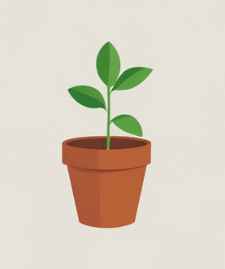Turn Your Kitchen Scraps into Plant Food — Right in Your Vertical Setup
If you’re growing vertically, why not close the loop by composting right there, too?
Composting in a vertical garden saves space, reduces waste, and gives your plants rich, natural nutrients — all without a big pile in your backyard.
Let’s dive into how to get started with composting in your vertical garden system, plus tips to keep it clean and effective.
🪴Why Composting Matters for Vertical Gardens
When you compost, you recycle organic waste like vegetable peelings, coffee grounds, and garden clippings into nutrient-rich soil. This means your plants get better food and you save money on fertilizers.
In vertical gardening, composting is especially handy because you can often do it right inside or next to your planter — no extra space needed!
🥬What You’ll Need to Start Composting Vertically
- Compost bin or chamber: Some vertical systems (like the Garden Tower 2) have built-in compost chambers. If yours doesn’t, you can add a small compost bin nearby.
- Organic waste: Kitchen scraps (no meat or dairy), leaves, shredded paper, coffee grounds.
- Brown and green balance: Browns = carbon (dry leaves, paper), Greens = nitrogen (vegetable scraps, grass clippings). Aim for about 3 parts brown to 1 part green.
- Aeration tool: A small compost aerator or garden fork to mix the pile.
🧅Steps to Compost in Your Vertical Garden
- Add scraps regularly: Drop your kitchen scraps and garden waste into the compost chamber or bin.
- Balance browns and greens: Make sure to mix in enough dry material to keep it from smelling.
- Turn or aerate: Every week or so, stir the compost to speed decomposition and prevent bad smells.
- Keep it moist: The pile should be as damp as a wrung-out sponge — not soaking wet or dry.
- Harvest your compost: After 2–3 months, you’ll have dark, crumbly compost to mix into your planter soil.
🫑Tips for Clean and Easy Vertical Composting
- Avoid meat, dairy, and oily foods — these attract pests.
- Use a sealed compost bin if pests are a problem.
- If your system has a compost chamber, make sure it’s well ventilated and easy to access.
- Consider adding worms (vermicomposting) to speed up the process and improve compost quality.
My Experience with Composting Vertically
I started using the compost chamber in my Garden Tower 2 last year and it’s been a game changer. Kitchen scraps go in one side, and rich compost comes out the other. It’s tidy, odor-free, and my plants love it.
If your vertical system doesn’t have a built-in bin, a small worm farm or bin nearby can work just as well.
🥑Ready to Try Composting in Your Vertical Garden?
Composting is a fantastic way to reduce waste and give your plants a nutrient boost — all without needing a big yard. Plus, it’s surprisingly easy once you get the hang of it.
If you want a vertical system with a compost option, check out my full review of the Garden Tower 2 here.
